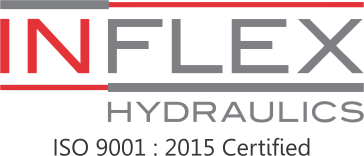Camlock couplings, also known as cam and groove fittings, are an essential part of industrial fluid transfer systems. Their ability to quickly connect and disconnect hoses or pipes without tools has made them indispensable in various sectors. From oil and gas to agriculture and food industries, camlock couplings provide safe and efficient solutions for fluid handling. However, with various camlock coupling types available, choosing the right one for specific applications such as air, water, oil, or high-pressure systems can be challenging. This guide will explore the different camlock coupling types and provide insights on how to select the most appropriate one for your needs.
What Are Camlock Couplings?
Camlock couplings are designed to provide quick and secure connections between hoses and pipes. They consist of a male adapter (also known as the “cam”) and a female coupler (the “groove”) with cam arms. When the cam arms are pushed down, they lock the male adapter into the female coupler, forming a tight, leak-proof seal without requiring any tools. This user-friendly mechanism saves time, enhances safety, and minimizes the risk of spills or leaks. With a simple, efficient design, camlock connectors offer one of the most convenient methods for fluid transfer across various industries.
Given their versatility, Camlock fittings are used in a wide variety of industries, including chemical processing, agriculture, food and beverage, pharmaceuticals, water treatment, and more. Whether it’s handling oils, chemicals, water, or air, Camlock fittings are suitable for different types of fluids, making them incredibly popular across many industrial applications.
Also Read: 7 Tips to Properly Maintain Industrial Hoses for Long-Term Durability
Different Types of Camlock Couplings
Camlock couplings come in various types, each designed to meet different connection requirements. The selection of the right type depends on the application, pressure ratings, materials, and fluid being transferred. Let’s break down the key camlock types commonly used in various applications:
- Type A: Male Adapter with Female Thread
Type A camlock fittings feature a male adapter with a female thread, making them ideal for connecting to threaded components. This type is often used for oil, fuel, and water applications, where compatibility with threaded pipes is essential. The ability to connect to male-threaded components without the need for additional fittings makes Type A highly efficient and versatile in industrial environments. Additionally, they offer a tight, secure connection for fluids that may require more rigorous handling. - Type B: Female Coupler with Male Thread
Type B camlock fittings are the reverse of Type A, with a female coupler and a male thread. This type is used when the coupler needs to attach to a male-threaded component. It is commonly used in water, oil, and chemical applications where the connection must be secure and tight. These fittings are reliable, offering the flexibility to connect with male-threaded pipes, making them versatile for systems that require a strong, leak-proof connection. - Type C: Female Coupler with Hose Barb
Type C camlock fittings have a female coupler and a hose barb, making them ideal for connecting to hoses. The hose barb ensures a tight fit and secure connection, preventing leaks. Type C is commonly used for applications involving water, air, and fuel. These couplings are perfect for systems where flexibility and quick attachment of hoses are necessary, ensuring optimal performance in various sectors such as agriculture, firefighting, and fluid transport. - Type D: Female Coupler with Female Thread
Type D camlock fittings have a female coupler with a female thread. This type is used when two female-threaded components need to be connected. It is commonly used in industrial applications where threaded components are essential. Type D fittings are often used in environments requiring a more standardized connection, especially when installed into pre-threaded pipework. - Type E: Male Adapter with Hose Barb
Type E camlock fittings feature a male adapter with a hose barb for connecting to hoses. This type is suitable for air, water, and fuel applications, where a secure connection between the hose and the fitting is needed. The hose barb ensures that hoses are tightly secured to prevent accidental disconnections, making it an ideal option for industries involving transportation and transfer of liquids and gases. - Type F: Male Adapter with Male Thread
Type F camlock fittings have a male adapter with a male thread, often used for connecting to a female-threaded component. It is frequently used in applications requiring a secure connection and high-pressure resistance. These fittings are ideal for use in systems where pressure resistance is key, making them a popular choice in oil, gas, and industrial fluid systems that require constant, high-performance conditions.
Recommended Reading: 5 Common Problems with Metal Bellows Expansion Joints and How to Fix Them
- Type DC: Dust Cap for Male Adapters
The Type DC camlock fitting is a dust cap used to cover the male adapter when it is not in use. It helps keep contaminants out and ensures the integrity of the connection when the coupling is not in operation. Dust caps are vital for maintaining the cleanliness and functionality of camlock couplings, especially when used in industries like chemicals and pharmaceuticals, where contamination control is a priority. - Type DP: Dust Plug for Female Couplers
The Type DP camlock fitting is a dust plug for female couplers, ensuring the coupler is protected from dirt, debris, and moisture when not in use. Dust plugs are an essential component to maintaining the life of camlock fittings, providing extra protection against elements that may lead to corrosion or degradation over time.
Choosing the Right Camlock Coupling for Different Applications
Choosing the right camlock coupling is crucial to ensure efficiency, safety, and longevity of the system. Below are factors to consider when selecting camlock couplings for various applications:
Air Systems
For air systems, the most common types of camlock couplings are Type C (female coupler with hose barb) and Type E (male adapter with hose barb). These types offer quick connections for low-pressure applications and are ideal for pneumatic systems. Air systems demand couplings that are lightweight, easy to handle, and capable of withstanding low pressures. Ensure that the material of the coupling is compatible with the air pressure to maintain safe and leak-free operations.
Key Considerations: Material compatibility (e.g., aluminum or brass), size, and pressure ratings. Couplings used in air systems should also be resistant to wear and tear due to repeated connection and disconnection cycles.
Water Systems
When selecting camlock couplings for water systems, Type A (male adapter with female thread), Type B (female coupler with male thread), and Type C (female coupler with hose barb) are commonly used. Water applications require couplings that offer a tight seal to prevent leaks, as water systems typically operate under moderate pressure.
Key Considerations: Corrosion resistance (e.g., using brass or stainless steel for long-term durability), pressure ratings, and size compatibility with the water pipelines. Materials like stainless steel provide superior resistance to corrosion, making them ideal for long-term use in water systems.
Oil Systems
For oil transfer, camlock couplings must withstand high-pressure and temperature conditions. Types A, B, and F (male adapter with male thread) are commonly used for these applications. Oil systems often require fittings that are resistant to oil and temperature fluctuations, making durable materials like stainless steel or aluminum essential.
Key Considerations: Materials like stainless steel, which offers resistance to corrosion and high temperatures. Ensure compatibility with oil-specific fluids and high-pressure ratings. High-pressure applications in oil systems often require more robust camlock fittings to prevent failure or leaks during operations.
High-Pressure Applications
In high-pressure applications, such as those found in chemical processing, types A, B, and F (male adapter with male thread) are ideal, especially when working with fluids under extreme pressure. High-pressure environments demand camlock couplings that offer superior strength and durability to handle extreme force and prevent leaks.
Key Considerations: High-strength materials like stainless steel, pressure rating, and the ability to withstand temperature extremes. High-pressure systems require camlock connectors with advanced sealing mechanisms to ensure they function safely under demanding conditions.
Also Read: Top 5 Applications of Stainless Steel Expansion Bellows in Various Industries
Material Selection for Camlock Couplings
The material of the camlock coupling is vital for its performance and longevity in specific applications. Here are some commonly used materials:
- Aluminium: Lightweight and resistant to corrosion, ideal for water and petroleum-based fluids.
- Stainless Steel: Highly resistant to corrosion and high temperatures, making it ideal for chemicals, oils, and high-pressure systems. Stainless steel is the material of choice in demanding environments where reliability and longevity are crucial.
- Brass: Durable and corrosion-resistant, often used for water, coolants, and fuels. It provides a good balance of cost and performance in many general applications.
- Polypropylene: A cost-effective material for low-pressure applications that is resistant to a wide range of chemicals. Polypropylene is suitable for industries dealing with mildly corrosive fluids or less demanding systems.
Inflexhydraulics offers a wide range of camlock connectors, camlock fittings, and camlock coupling types to meet the needs of various industries. Whether you’re looking for quick-connect solutions for air, water, oil, or high-pressure systems, inflexhydraulics provides high-quality, durable camlock couplings designed to ensure safe and efficient fluid transfer.
Camlock couplings are essential components for a variety of fluid transfer systems, offering fast, secure, and reliable connections. Whether you’re working with air, water, oil, or high-pressure applications, choosing the correct camlock coupling type is crucial for optimal performance. By understanding the various coupling types and materials available, you can make an informed decision that ensures safe and efficient operations in your industry. Always consider the specific requirements of your application, such as pressure ratings, fluid compatibility, and material durability, to select the best camlock fitting for your needs.



